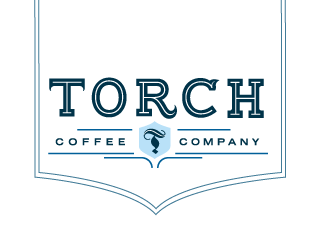As a roasting company
I don’t know if you’ve ever heard customers offer feedback like
“I’ve heard many people say your company’s roasted beans are great, so I excitedly bought a bag of coffee beans. After brewing, the result was an unsatisfactory cup of coffee. I wondered is there something wrong with my brewing so after making adjustments, it’s still the same. I feel cheated!”
Of course, the problem lies not with the customer’s brewing, and others who praised the beans were not lying however the customer unfortunately bought roasted beans that had not been quality-controlled.
When a coffee shop or individual buys roasted beans from a roastery, their first wish is certainly that the coffee does not taste bad and the flavor meets expectations.
Second, many customers have their own personal coffee preferences. They tend to purchase the same coffee again and again over a period of time. If the quality of the product varies each time, it will introduce uncertainty into their mind.
This is why roasteries require a set of control systems for testing the quality of their roasted beans.
On the contrary roasters and quality controllers working in roasteries will discover that many factors limit quality-controlling roast beans. It is not a simple process.
Most roasteries are limited to only testing a cup of roast beans in which after roasting, the roasters will conduct a cup test to evaluate the quality of the beans.
Due to the mainstreaming of the “fresh roast” concept and same-day-delivery requirements, the cupping test must be undertaken immediately after the beans are done.
In this method of quality control many shortcomings are present
It is impossible to guarantee the quality of coffee by solely relying on personal senses;
The labor of a roaster is intense thus fatigue can affect sensory perception;
The flavor is often unstable on the same-day cup test of roast beans;
And the cup test is not the way customers consume their coffee, allowing for the existence of differences in perception.
We visited some famous roasteries at home and abroad to understand how they control for the quality of roast beans and what difficulties they encounter in the quality-control process.
The American “Light of Arkansas”—Onxy Coffee Lab
This is a boutique coffee company that is the gathering of champions. Independent cafes in the area travel as far as 60 miles to buy roast beans from them.
1. Roasted products are pre-adjusted to a roasting profile and roasters operate according to this profile. Of course the weather and other factors need to be taken into consideration;
2. Testing the color value and carrying out a next-day cup test on roast products. When the profile and color value are regular there are generally no major issues;
3. At the same time the stability of the raw bean quality will be regularly checked.
4. If the beans for a product are used up we will carry out a replacement testing to find new beans and profiles in order to ensure the stability of the flavor.
A well-known boutique coffee chain in China—Seesaw
Seesaw is a successful boutique coffee brand in China. It has approximately 30 stores in China. White-collar workers and coffee enthusiasts compose its main customer base.
1. Raw bean samples are tested in three rounds;
2. Monthly inspection of raw beans in warehouse;
3. The roast team sets the roasting profile and value of coffee power value for testing as well as the cup test.
Difficulty: Because of demand for fresh beans, same-day cup testing must be conducted. Therefor we must leave sample beans for the college to conduct a cup-test and in accordance with reviewing customer complaints, some of the products will need to be returned.
A famous Hong Kong boutique coffee company—Urban Coffee Roaster
A first-rate boutique coffee brand managed by a raw bean merchant. At Urban Coffee Roaster one can taste coffee beans from all parts of the globe.
Main quality control processes:
1. Next-day cup test, mainly using index assessment to evaluate whether or not the flavor of the beans has reached its full expression;
2. After five days, roasted beans will be calibrated with different cooking parameters.
Example: Italian blending imitates the way customers brew. We can record the extraction rate and flavor, then analyze whether or not it is necessary to adjust the brewing parameters or roast profile.
Difficulties: We cannot satisfy the various preferences of different customers.
This requires a system of feedback in the company; maintaining good communication with customers to understand their preferred tastes and brewing habits.
Ultimately improving the roasting profiles to cater to the public in order to facilitate them brewing their favorite coffee.
(P.S. Thanks to Summer, Ale and Lune for their three replies.)
Each roastery has its own unique systems and standards in accordance with their situation but they all share the same goal: to ensure the quality and stability of their coffee beans.
In the next article, we want to have a conversation with everyone about how to create a quality-control system for roast beans.
As the consumer, have you ever had similar vexing experiences when purchasing roast coffee beans?
At the same time, we welcome other colleagues to share methods and suggestions for quality control in the comment section below.
Ideally through exchange and discussion we can inspire further reflection and provide reference for other roasting friends who place a premium on the quality of their beans to safeguard the beans of consumers.








